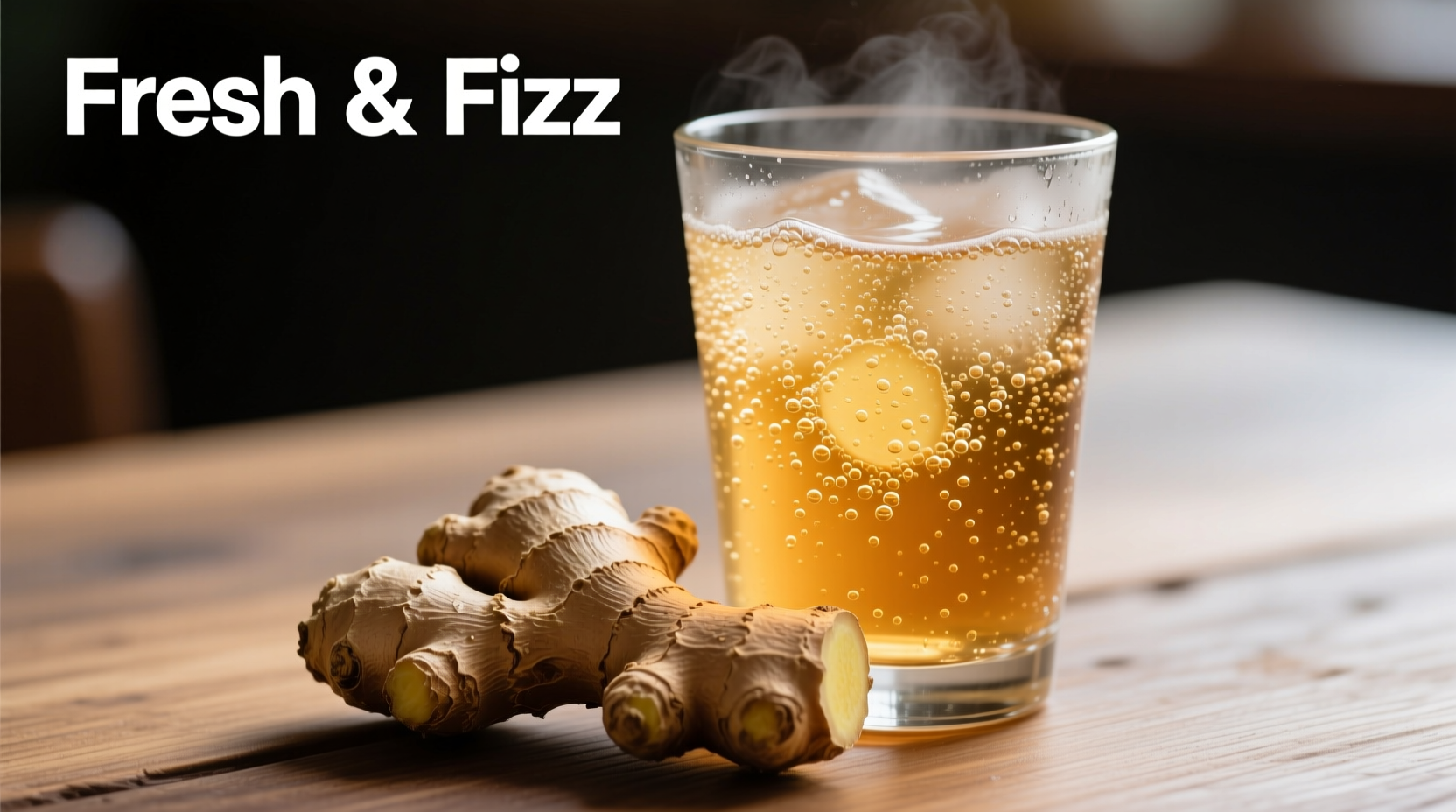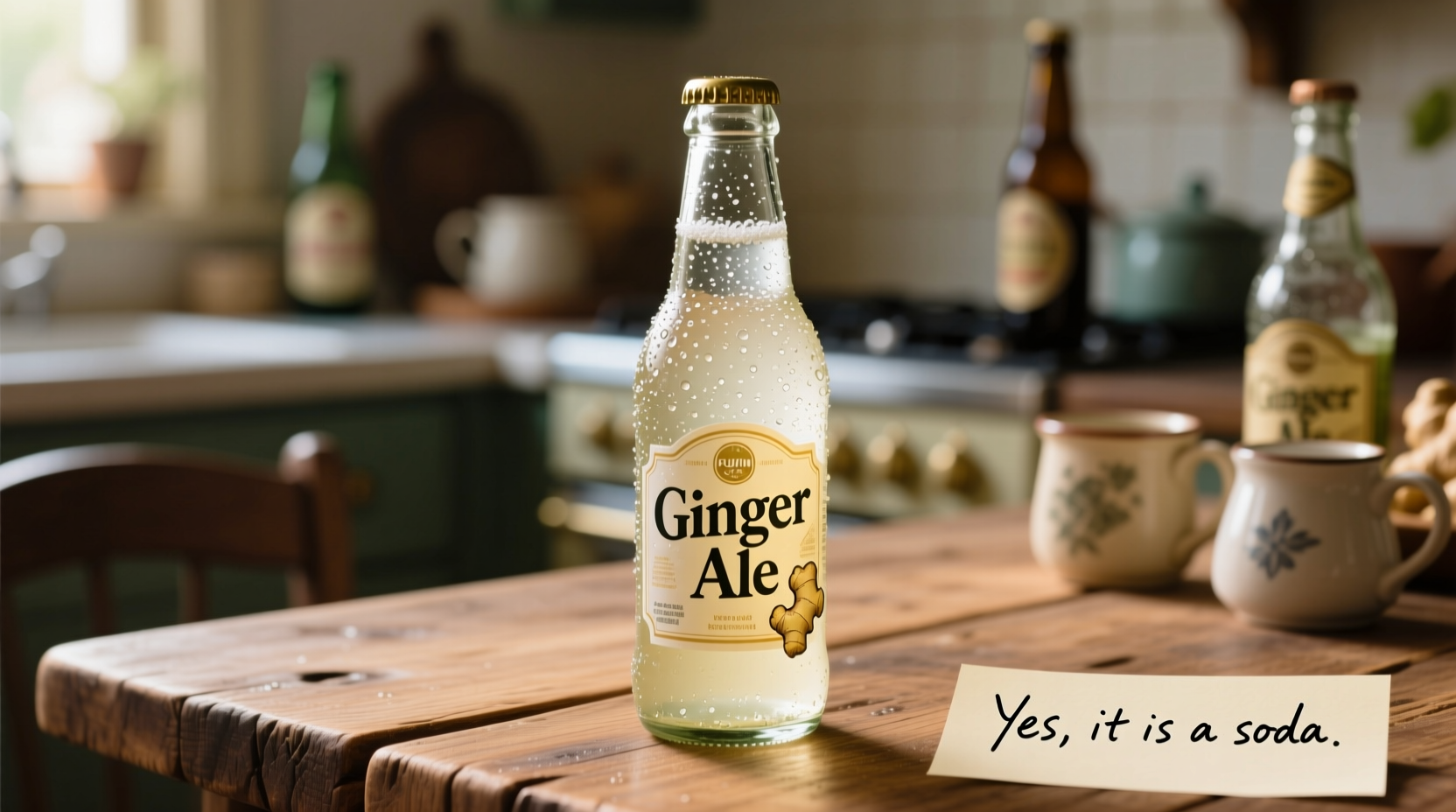What Exactly Defines a Soda?
Understanding whether ginger ale qualifies as a soda requires examining the technical definition of carbonated soft drinks. According to the U.S. Food and Drug Administration, a carbonated soft drink (commonly called soda) is any non-alcoholic beverage containing carbonated water, sweeteners, and flavoring agents. The key characteristics include:
- Carbonation level between 2.2-4.5 volumes of CO2
- Sweetener content typically 8-12% by weight
- Flavoring components that may be natural or artificial
- pH level generally between 2.5-4.0
Ginger ale meets all these technical criteria, placing it firmly within the soda category despite its distinctive flavor profile.
Ginger Ale vs. Traditional Sodas: Key Differences
While ginger ale fits the technical definition of a soda, several factors differentiate it from mainstream carbonated beverages:
| Characteristic | Ginger Ale | Traditional Soda | Ginger Beer |
|---|---|---|---|
| Primary Flavor Source | Ginger root extract | Synthetic flavors or fruit extracts | Fermented ginger root |
| Sweetness Level | Moderate (8-10%) | High (10-12%) | Variable (often less sweet) |
| Carbonation Method | Forced carbonation | Forced carbonation | Natural fermentation |
| pH Level | 3.0-3.5 | 2.5-3.0 | 2.8-3.2 |
| Production Time | Days | Hours | Weeks |

Historical Context: How Ginger Ale Evolved
Ginger ale's journey from medicinal tonic to mainstream soda reveals why classification questions persist. The timeline shows significant evolution:
- 1840s: First commercial ginger ale developed in Ireland as a medicinal beverage
- 1850s: Canadian pharmacist John McLaughlin creates "Golden Ginger Ale" using actual ginger root
- 1904: Canada Dry formula standardizes modern ginger ale production
- 1920s: Prohibition era boosts ginger ale popularity as cocktail mixer
- 1960s: Mass production shifts toward artificial flavors and higher sweetness
- 2000s: Craft movement revives interest in traditional ginger ale recipes
This historical evolution explains why many consumers perceive ginger ale differently than traditional sodas—it originated as a functional beverage rather than purely recreational drink.
Regulatory Classification: What Authorities Say
The Agricultural Marketing Service classifies ginger ale under Standard 542.400 for carbonated beverages, confirming its status as a soda. The Code of Federal Regulations (21 CFR § 101.30) specifically includes ginger-flavored carbonated beverages within the broader soda category.
Nutritionally, ginger ale aligns with other sodas in key aspects while differing in others:
- Similar calorie count (90-120 per 12oz serving)
- Comparable sugar content (22-30g per serving)
- Unique gingerol compounds not found in other sodas
- Generally lower acidity than citrus-based sodas
Practical Implications for Consumers
Understanding ginger ale's classification helps make informed choices:
Health Considerations
While ginger ale contains the same sugar levels as other sodas, the ginger component offers potential digestive benefits according to research published in the National Institutes of Health. However, these benefits are minimal in commercial varieties due to low ginger content and high sugar levels.
Culinary Applications
Ginger ale's unique flavor profile makes it versatile:
- Effective cocktail mixer (particularly with whiskey and rum)
- Useful for settling stomachs (though effectiveness varies by brand)
- Alternative to traditional sodas in recipes requiring milder carbonation
- Better pairing with spicy foods than citrus sodas
Making Informed Choices
When selecting ginger ale, consider these factors:
- "Dry" style (pale, milder flavor) vs. "golden" style (darker, spicier)
- Natural ginger content (check ingredient lists)
- Sugar alternatives in diet varieties
- Carbonation level preferences
Common Misconceptions Clarified
Several myths persist about ginger ale's classification:
- Myth: "Ginger ale isn't a soda because it has health benefits."
Fact: Many sodas contain ingredients with potential benefits (like citrus vitamins), but this doesn't change their classification. - Myth: "Real ginger ale uses fermented ginger like beer."
Fact: Commercial ginger ale uses forced carbonation; only craft varieties sometimes use fermentation. - Myth: "Ginger ale has less sugar than other sodas."
Fact: Sugar content is comparable—check nutrition labels for specific brands.











 浙公网安备
33010002000092号
浙公网安备
33010002000092号 浙B2-20120091-4
浙B2-20120091-4